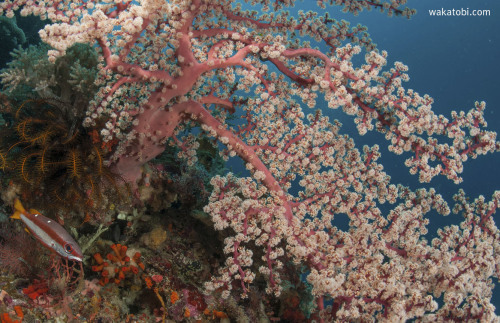#wakatobi
Coral polyps, stimulated by a near UV light. Initially believed to be a plant, coral is in fact an animal. While a coral head appears to be a single organism, it is actually a group of many individual, yet genetically identical, polyps. The polyps are multicellular organisms. Polyps are usually a few millimeters in diameter, and are formed by a layer of outer epithelium and inner jellylike tissue known as the mesoglea. They are radially symmetrical, with tentacles surrounding a central mouth, the only opening to the stomach or coelenteron, through which food is ingested and waste expelled. (Photograph: Mick Gulson)
Post link
During the day the Saron shrimp is brown with green spots and variable amounts of white speckling. The legs have darker brown bands on a brown background with alternating white speckled bands. Tufts of cirri (feathery appendages) are found decorating the back of the males, and their first pair of walking legs are elongated. The Saron Shrimp is nocturnal, and at night, the color of its body changes colour, turning primarily red, which helps it blend into the shadows of the twilight. It is found in the coral rubble at the base of the reef. (Photograph: Doug Richardson)
Post link
Also known as Godeffroy’s Soft Coral, this tree coral looks like the Japanese ‘sakura’ or cherry blossom tree. They feed on plankton and can grow to about 17cm in length. (Photograph: Eric Schlogl)
Post link




